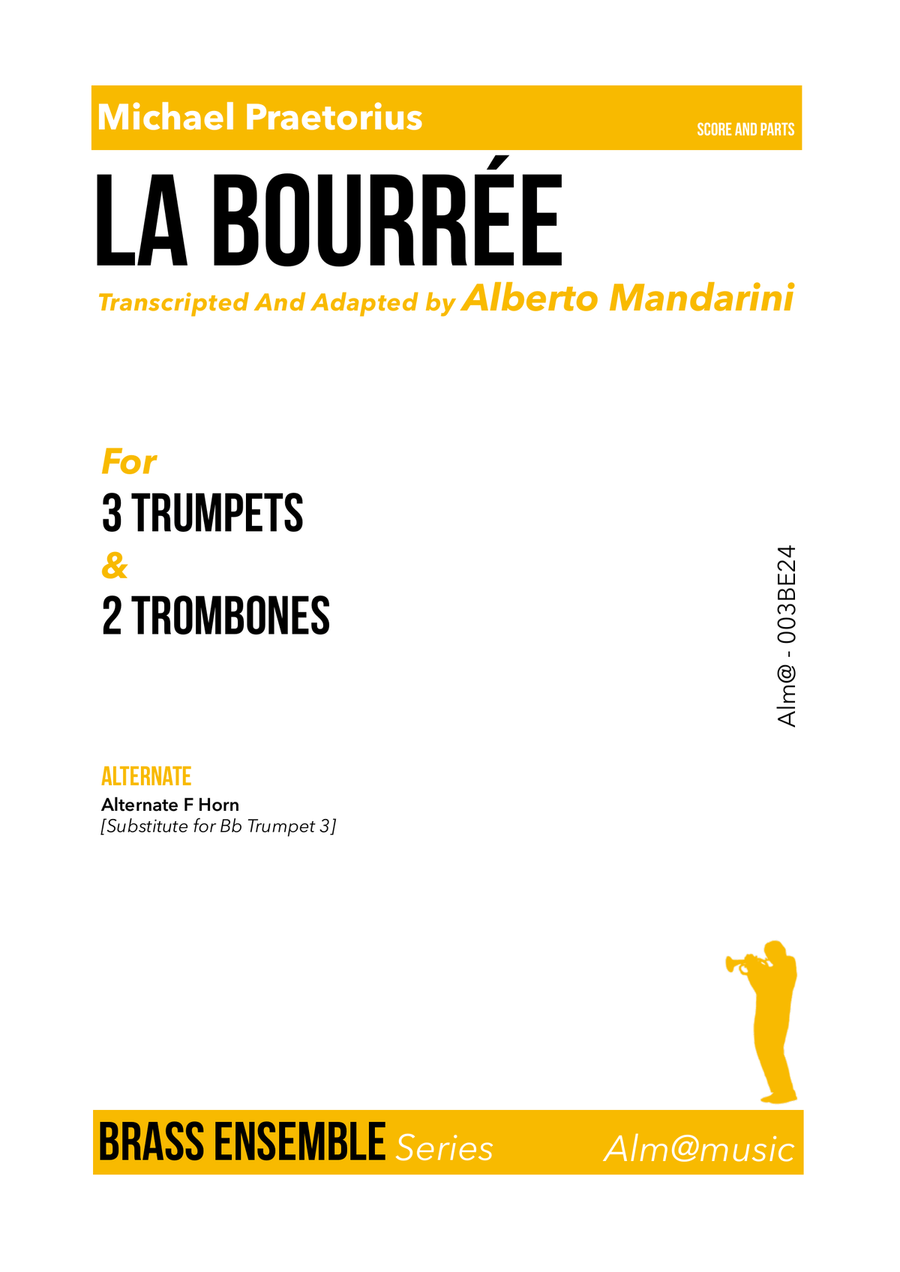Brass Ensemble Trombone,Trumpet - Level 2 - Digital Download SKU: A0.1491035 Composed by Michael Praetorius. Arranged by Alberto Mandarini. Baroque,Chamber,Classical,Instructional,Renaissance. 18 pages. Alm@music #1067793. Published by Alm@music (A0.1491035). Brass Ensemble: 3 Trumpets and 2 Trombones - Grade 2.This is also a transcription and a small adaptation of the original score.I chose “La Bourrée” by Michael Praetorius mainly for educational purposes thanks to the not excessive difficulty, but perfect for students with an intermediate level of preparation. Furthermore, the skillful writing of Praetorius and the beauty of this short composition of his, make the piece absolutely suitable to be included in any concert program.Starting from the 4 canonical parts, I focused above all on the redistribution of the voices bringing them to 5 and intervening on the reorganization of the refrains. Always with the utmost respect for the original score, I simply imagined two opposing choirs that alternate, responding to each other and becoming protagonists from time to time, thus replacing the mere repetition of the refrains.The themes, in turn and to the extent possible, were distributed across all the voices using, in some cases, even simple doubling.As in the adaptation of Contrapunctus I by J. S. Bach, ( https://www.sheetmusicplus.com/en/product/contrapunctus-i-from-the-art-of-the-fugue-bwv-1080-22828292.html ) the choice to use 3 trumpets and 2 trombones, and not the more typical brass quintet (2 trumpets, horn, trombone and tuba), was dictated by the formation for which I made the transcription.Finally, on a didactic level, this piece was fundamental to consolidate a formation at the first experiences and allowed me to deepen the salient aspects of ensemble music such as listening, musical breathing and interplay in its broadest sense.To the individual parts, as usual, I also added that of the horn in F, replacing the 3rd trumpet. At your discretion, of course, to decide whether to replace it or double it directly.The total duration is about 2 minutes and 20 seconds and the midi audio should be useful to get an idea of ??the arrangement and to be able to study the individual parts.Good Music!am.
